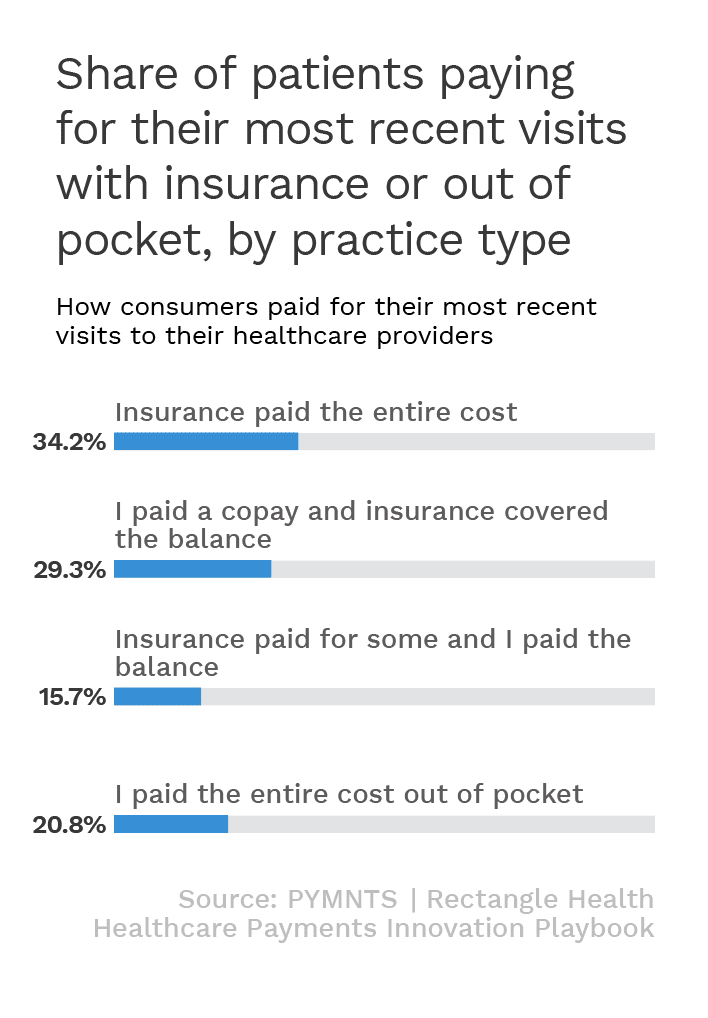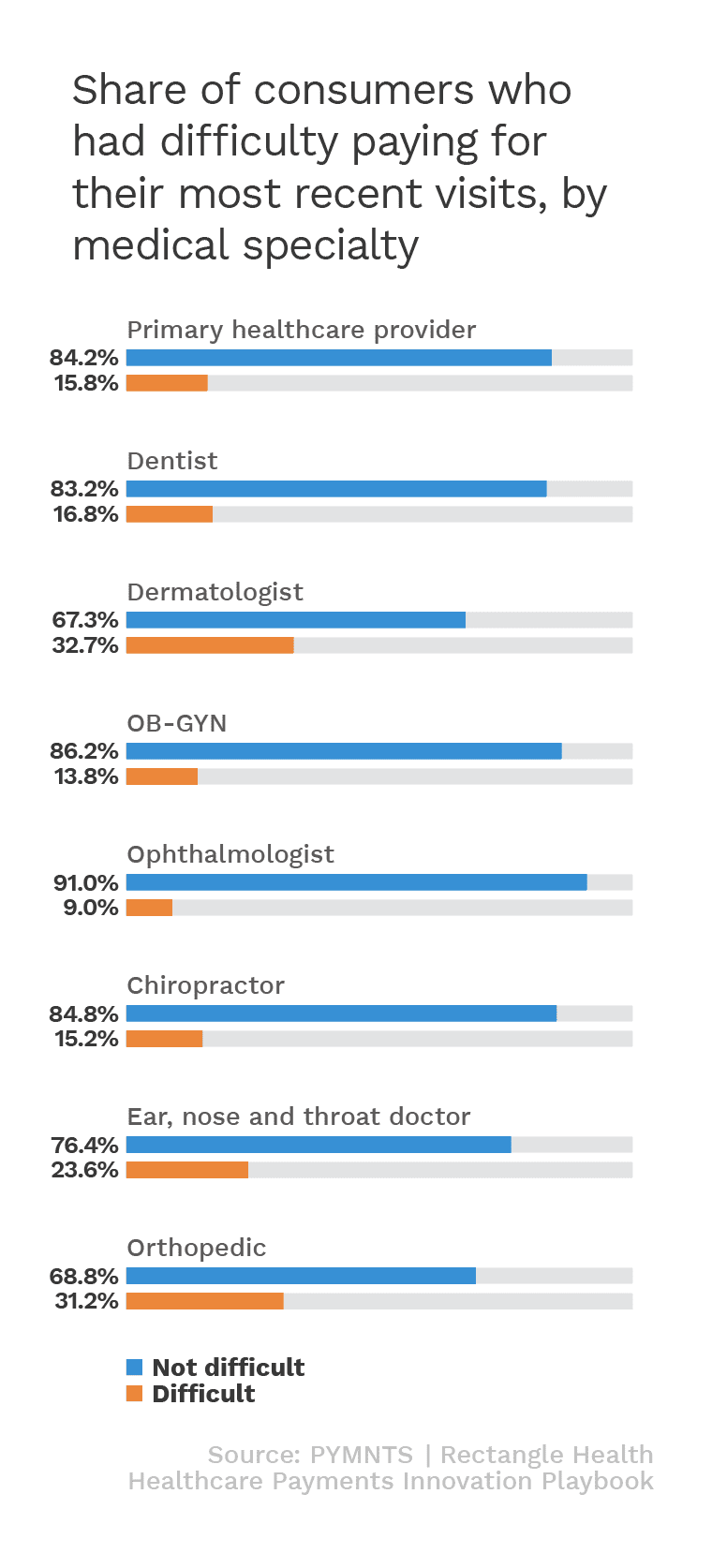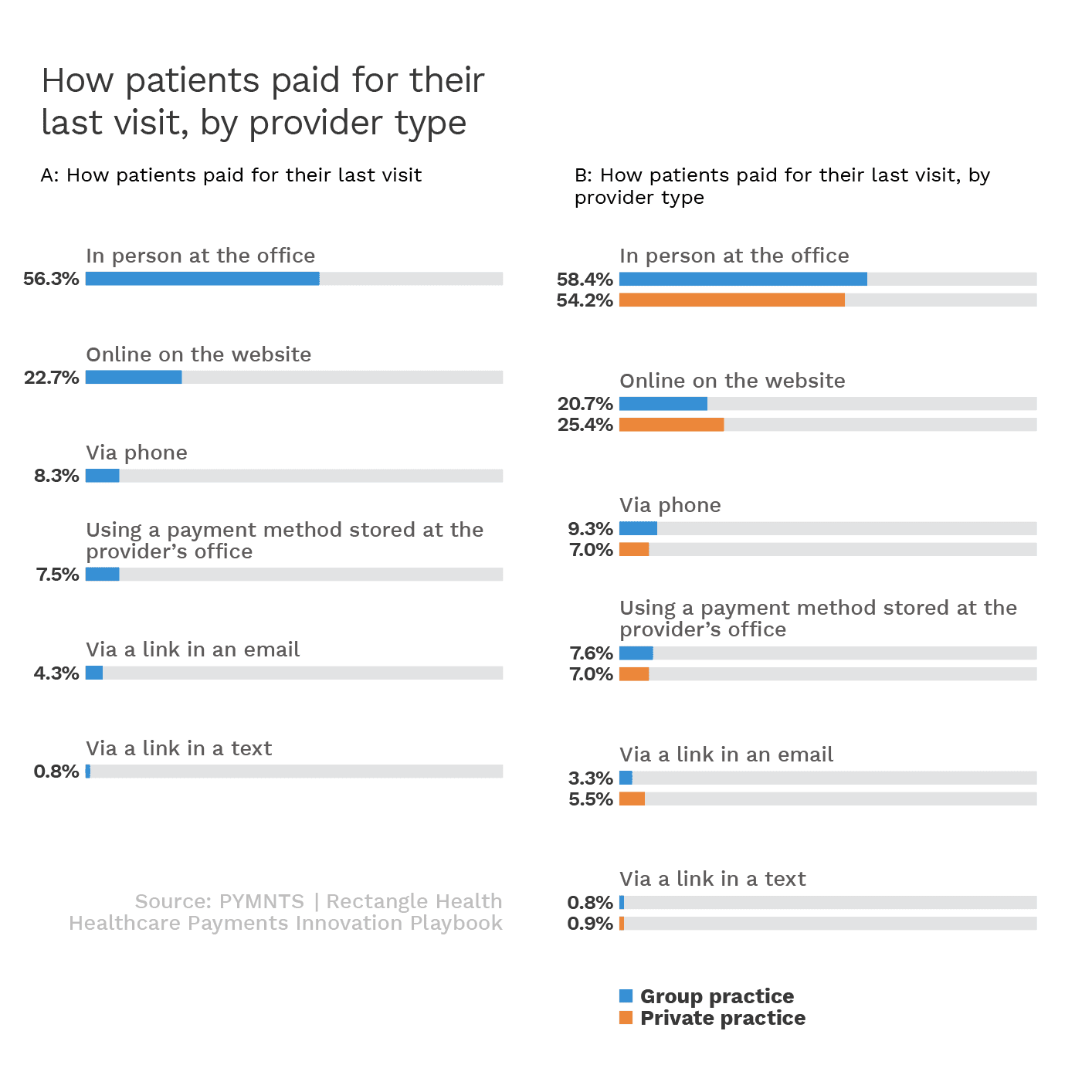New Healthcare Study Stir: Medical Practices Lag In Digital Payments, Patient Experience

Know those emails you get from the doctor’s office telling you to log on to their antiquated internet 2.0 website for your test results? How’s that been working out?
Business ills like that afflicting the healthcare industry have as much to do with digital obsolescence as they do COVID disruptions. Add in the current economic crisis where many are unable to cover out-of-pocket costs, and it’s a prescription for difficulty.
Sorting out how physicians and practices can heal themselves financially, the first in PYMNTS new Healthcare Payments Innovation Playbook series done in collaboration with Rectangle Health looks at pain points and digital curatives for this hurting sector.
Surveying close to 2,100 patients of private and group medical practices last year to learn about the quality of their experiences when paying for visits, PYMNTS found that “consumers want their healthcare experiences to be more like their digital retail experiences. The majority of patients want user-friendly digital payment options that are easy to understand and access. They also want comprehensive information on their payment options from their healthcare providers so that they can make informed payment choices.”

Payments As An ‘Essential Service’
Physicians tend to like a 360-degree view of the patient to design the best treatment plan, and the same principles apply to healthcare payments, where many patients are struggling.
With 22 percent of private practice patients reporting difficulty paying out-of-pocket costs versus 13 percent in group practices, the March Healthcare Payments Innovation Playbook notes that “Group practices have more resources at their disposal and can divide costs among several partners,” while adding that “private practices tend to lag behind group practices in essential customer experience tools, like user-friendly, informative websites or digital payment options. It is perhaps not surprising that 31 percent of group practice patients use their providers’ websites, compared with just 20 percent of private practice patients.”
It gets even thornier when paying specialists. Per the new Playbook, “nearly one-third of patients who visited dermatologists or orthopedic doctors had difficulty paying for their visits, while 57 percent and 53 percent of private practice orthopedic and dermatology patients, respectively, paid the entire cost of their visits, compared with 10 percent and 4 percent of the same patients, respectively, visiting a group practice.”
The diagnosis is that “a greater range of payment options and improved patient education about billing, insurance copays and payment arrangements are essential for private practices to remain competitive. Private practices also tend to have higher expenses than group practices, and these costs may make their services more expensive for some healthcare consumers.”

Curing Outdated Healthcare Payments, Starting With Websites
As the new research shows, private and group practices are both under new pressures, “but both can benefit from simplified payment procurement and deeper customer engagement. Payments modernization means better customer experiences for patients as well as long-term, sustainable growth for private and group practices alike.”
For most that starts with the practice’s digital front door — their website. Patients aren’t using them very much at present and that needs to change as a function of streamlining.
“Our research reveals that providers’ websites are an underutilized resource for payments management and consumer engagement,” the March Playbook states. “This is not just true for private practices. Group practices are also falling behind when it comes to modernizing payments. Enabling patients to make payments through a website and offering them payment plan options could help providers retain the 22 percent of private practice patients and 13 percent of group practice patients who report having difficulty paying their bills.”
Not accepting online payments is now seen as a stone age experience that confounds patients. We found that found that less than one-quarter of consumers paid medical bills on their healthcare providers’ websites, even though “78 percent of group practice and 66 percent of private practice patients use debit and credit cards to pay for their visits.” Fully 56 percent of patients paid in person at the doctors’ offices. In the time of touchless, that just doesn’t fly.
“Contactless payment options and automated payment plans put consumers in control of the registration process and automate insurance copay management,” according to the Healthcare Payments Innovation Playbook. “This means fewer billing surprises for patients and easier revenue cycle management for healthcare providers.”

